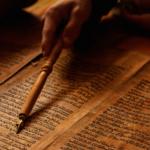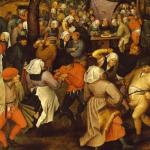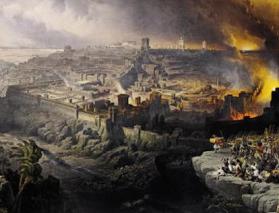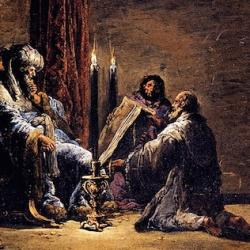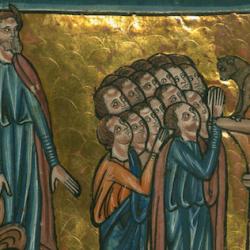The Chronicler’s account of Josiah’s reign is glowingly positive. He seeks Yahweh, purges idolatry from Jerusalem, Judah, and the temple, listens to the word of the Lord, leads a covenant renewal, and throw an unprecedented Passover celebration.
But there’s a subtle counter-melody running along behind the surface song of triumph. It tells the story of Josiah’s reign as a recapitulation of the history of Israel – in reverse.
Consider:
1) Josiah purges the land of idolatry (2 Chronicles 34:1-7). It’s a repetition of the conquest, when Joshua smashed altars and dismantled shrines throughout the land. Josiah is a Moses pulverizing Asherim as Moses pulverized the golden calf (cf. Exodus 32).
2) In his 18th year, Josiah attends to repairs of the house (34:8-13). He is imitating earlier kings, but also following the lead of Moses, who built the original sanctuary at the foot of Sinai.
3) In that same year, Hilkiah comes out of the temple with a book of Torah (34:14-28). One is reminded of Moses ascending into the cloud at Sinai (the cloud that also filled the temple), and emerging with the tablets of the Law and the book of the covenant.
4) Warned by Huldah about Judah’s coming doom, Josiah leads Israel in covenant renewal (34:19-33). Israel pledges to walk in Yahweh’s commandments and statutes, as they did at the foot of Sinai after Moses brought the law down from the mountain (Exodus 24:7).
#2-4 recapitulate the events of Sinai, but roughly backwards. Instead of the Mosaic sequence (law delivered and covenant commitment, following by the building of the tabernacle), we find a counter-Mosaic sequence (house repaired, then law delivered and covenant commitment).
5) Still in the 18th year, Josiah organizes a Passover in Jerusalem (35:1-19). Passover, of course, commemorates Israel’s deliverance from Egypt. In Exodus, it occurs before Israel comes to Sinai; in 2 Chronicles 34-35, Judah celebrates Passover after the Sinai-like events of the previous chapter.
6) Passover was the climax of Israel’s deliverance from Egypt, but Josiah’s Passover leads to a new enslavement to Egypt, as Josiah dies in battle with Pharaoh Neco (35:20-27; see my discuss here), and Judah becomes, for a time, a client state of Egypt (36:1-4).
In short, instead of this sequence: Egyptian slavery–>Passover–>Sinai covenant–>conquest, Josiah’s reign is organized as conquest–>covenant renewal–>Passover–>Egyptian slavery.
When Josiah dies, Judah is not only back where they were at the beginning of the kingdom (note parallels between Josiah’s death and Saul’s, 1 Chronicles 10). They’ve turned back the clock all the way to the beginning, all the way past exodus and Passover, back to Egypt.
This is the climax of a recurring theme in 1 Chronicles, in which Judah’s unfaithfulness throws time into reverse (see here). Josiah’s reign looks like an upswing, but the basso continuo is the opposite, a countdown to exile.

